Crete is one of the largest and most beautiful islands in the Mediterranean Sea, full of paradise beaches, stunning nature and a few thousand years of history. Trot Op! booked a flight and a rental car, and visited the best hotspots and sights on Crete.
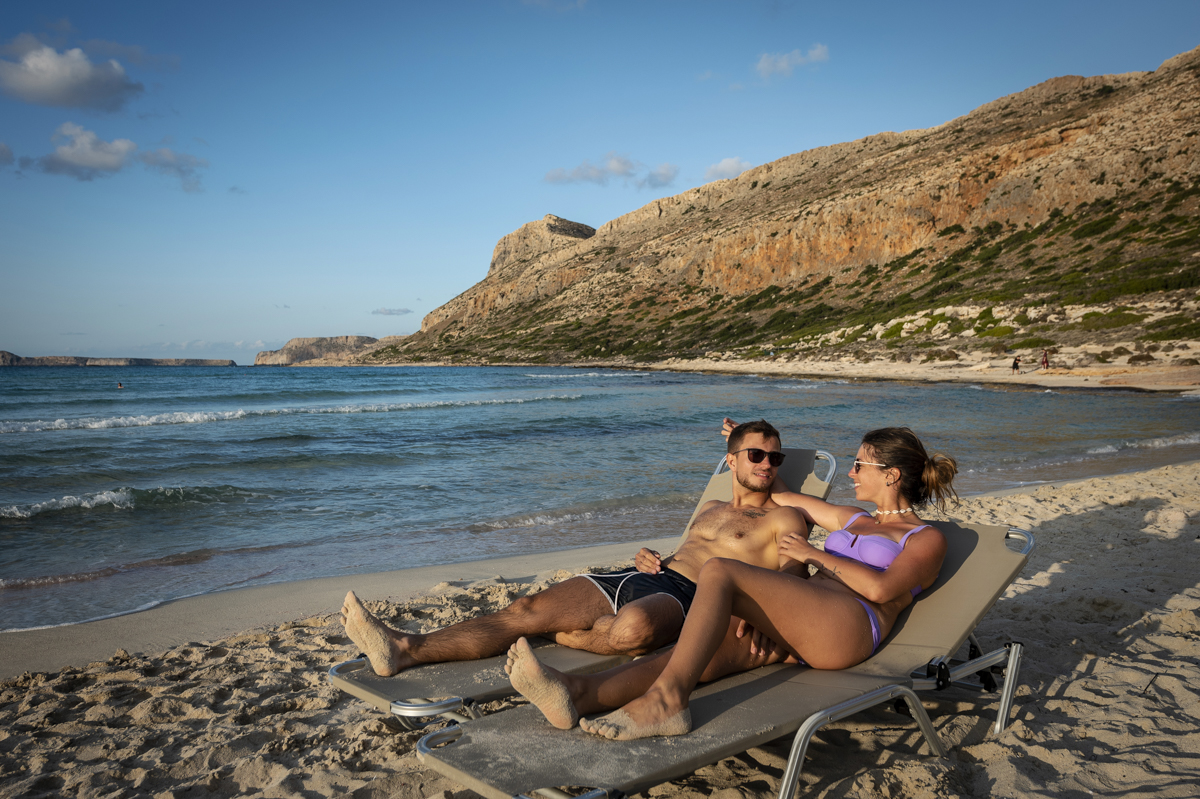
Let’s not beat around the bush everybody: when push comes to shove I’m quite a civilised man. Which is at least partly why taking a road rip to the cradle of western civilisation sounded like a splendid idea to me. This so called cradle is not to be found in Rome or even Athens, but on the beautiful island of Crete. Here, the Minoans laid out the first cornerstones of European culture about five thousand years ago. Yes, while our ancestors were all huddling in some damp cave, feverishly gnawing on a hyena bone in the vain hope of keeping themselves warm, the Cretans were already building imposing palaces and towns. Where exactly these people came from or what they called themselves at the time, we still don’t know for sure, but the trading empire they developed dominated the entire region for over a thousand years. They did business with great powers such as ancient Egypt and Mesopotamia, and Minoan ships even sailed all the way to the cliffs of Dover. This is quite an impressive voyage. It took Julius Caesar over 2000 years to grow out of his diapers and do the same.
What to do on Crete: the 11 most exciting tips and sights
But why did the first European civilization originate here and not in let’s say Wortegem-Petegem (look it up)? One look at the island should tell you all you need to know: Crete is magnificent. The interior is an endless succession of mountain ranges and valleys, the rocky coast is home to one heavenly beach after another and the climate is perfect for both agriculture and winegrowing – something the Cretans are still invested in today. All in all, Crete is an amazingly versatile destination in a relatively compact area. You can plan a varied and unforgettable holiday here, especially when renting a car. Allow me to help you with those plans. Here are my top 11 activities and sights that should be in every trip to Crete.
1. Visit the Archaelogical Museum of Heraklion
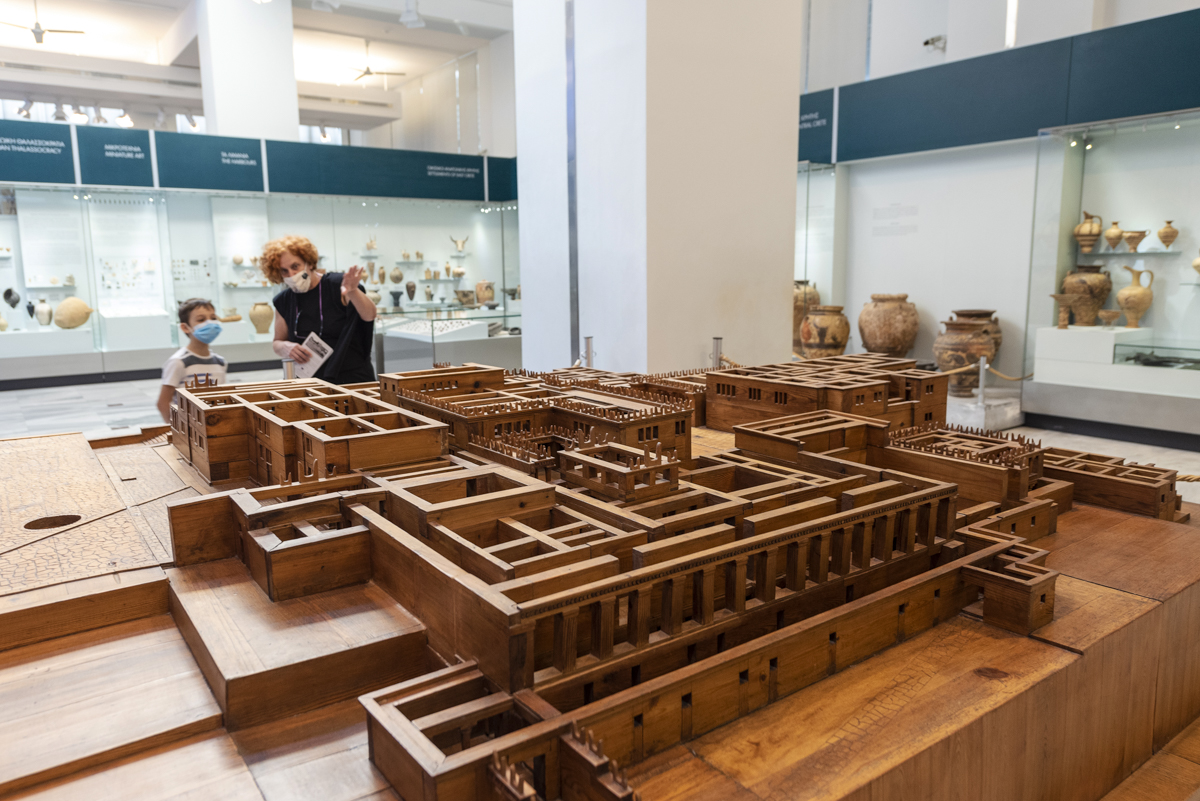
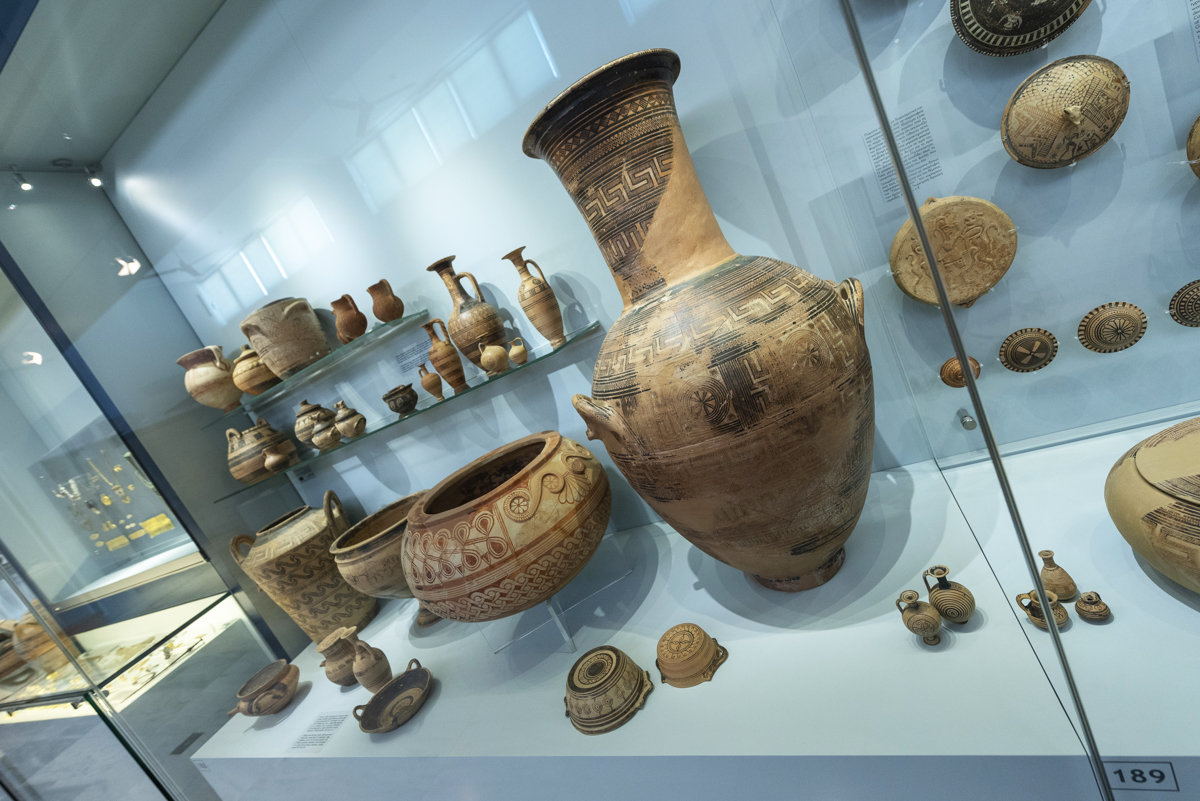
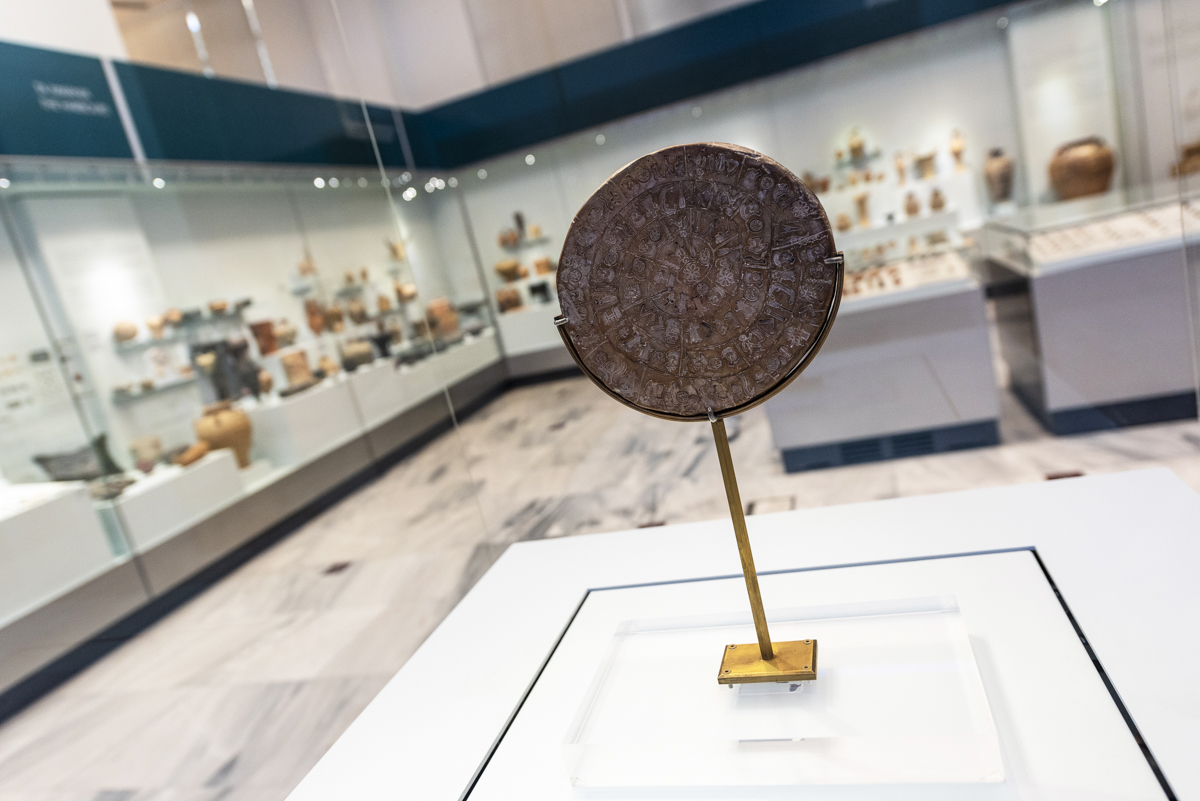
Your average holiday on Crete logically starts in the capital. This is Heraklion, and the old town is full of cosy squares, winding streets and lively restaurants. It’s the cultural treasures however that make every visit a must. The Archaeological Museum of Heraklion is one of the most important of its kind in Europe. Before you drive halfway up and down the island to visit its many historic sites, you should get a little bit of useful context here. More than 5,000 years worth of artifacts are gathered in this museum. The most intriguing piece is the Disk of Phaistos. This is a little discus full of strange signs we still haven’t deciphered. Does it explain the deepest secrets of the cosmos? Is it a distant precursor of the Iliad? Is it a silly grocery list of one of Aunt Rita’s inbred ancestors? We’ll probably never know. www.heraklionmuseum.gr
2. Find the Minotaur in the Palace of Knossos
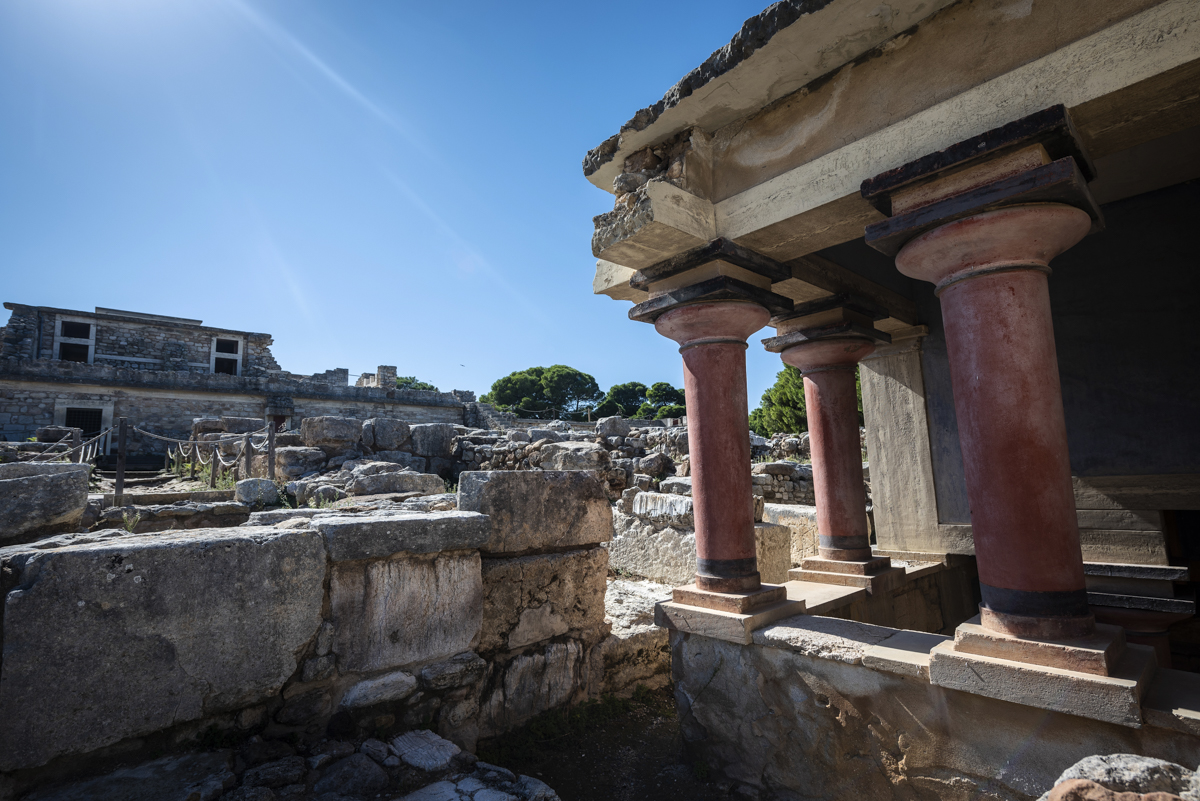
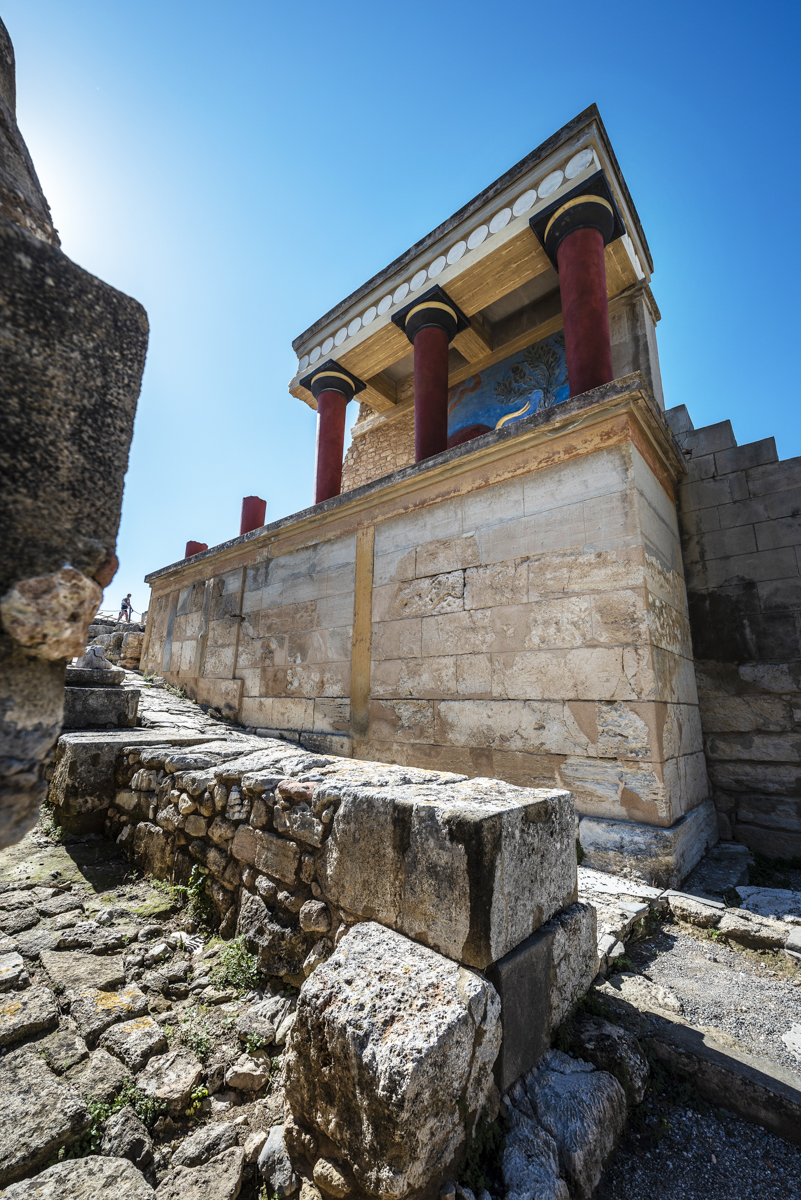
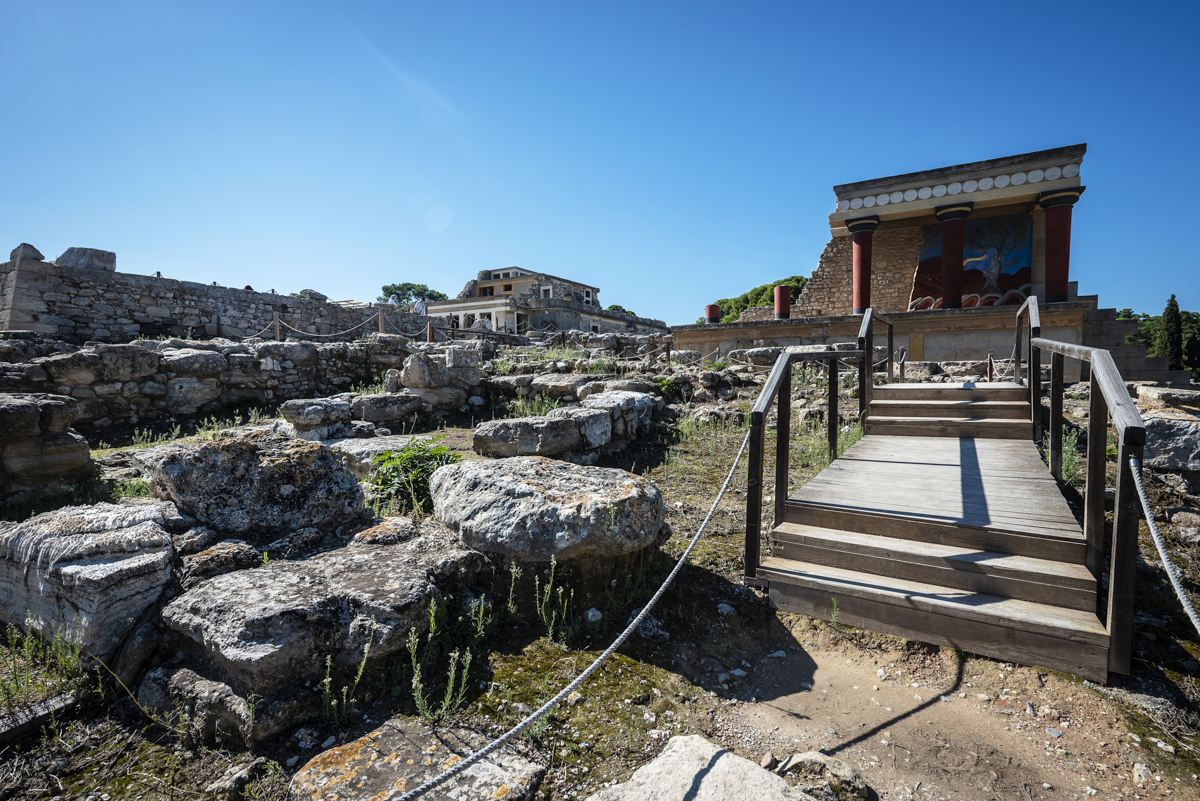
Finished the museum? Then you’re ready to visit the ruins of the Palace of Knossos a little further away. This impressive complex is located outside the city centre of Heraklion, and according to legend it was home to King Minos. Every nine years this man would release seven boys and seven girls into his labyrinth – every self-respecting palace had a labyrinth in those days – to serve as a snack for the mighty minotaur. This was a bloodthirsty beast with a man’s body and a bull’s head, which was apparently on a strict diet at the time. Both the labyrinth and the monster are of course Greek fabrications, and Minos was the Mediterranean equivalent of King Arthur. However, the palace itself is not a myth, and for centuries it was the centre of political and economic life on Crete. Even today it’s still the most popular attraction on the island. In the high season the place can get pretty busy, and you’ll have to use your imagination to relive its original glory. A lot of it has of course crumbled down throughout the ages, but it’s still an imposing site nonetheless. Those who travel to Crete without seeing Knossos might as well have stayed at home. www.knossos-palace.gr
3. Go on a romantic walk through Chania
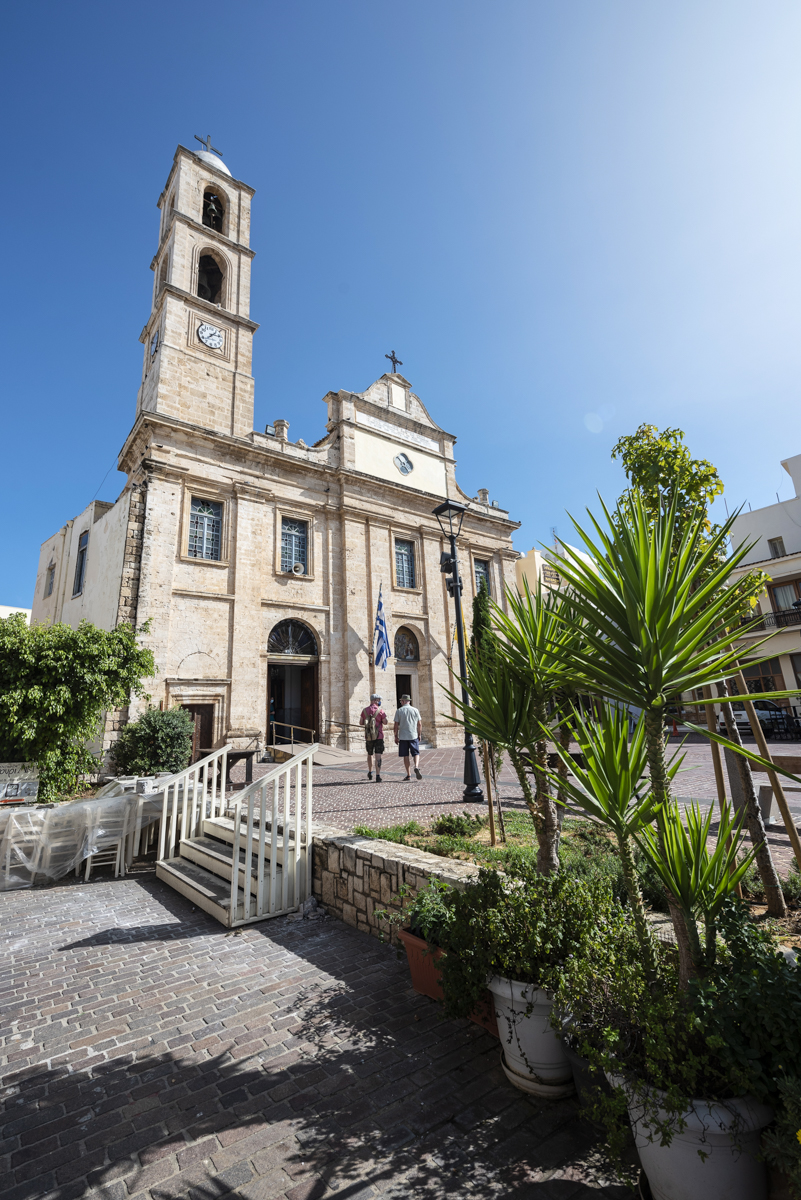
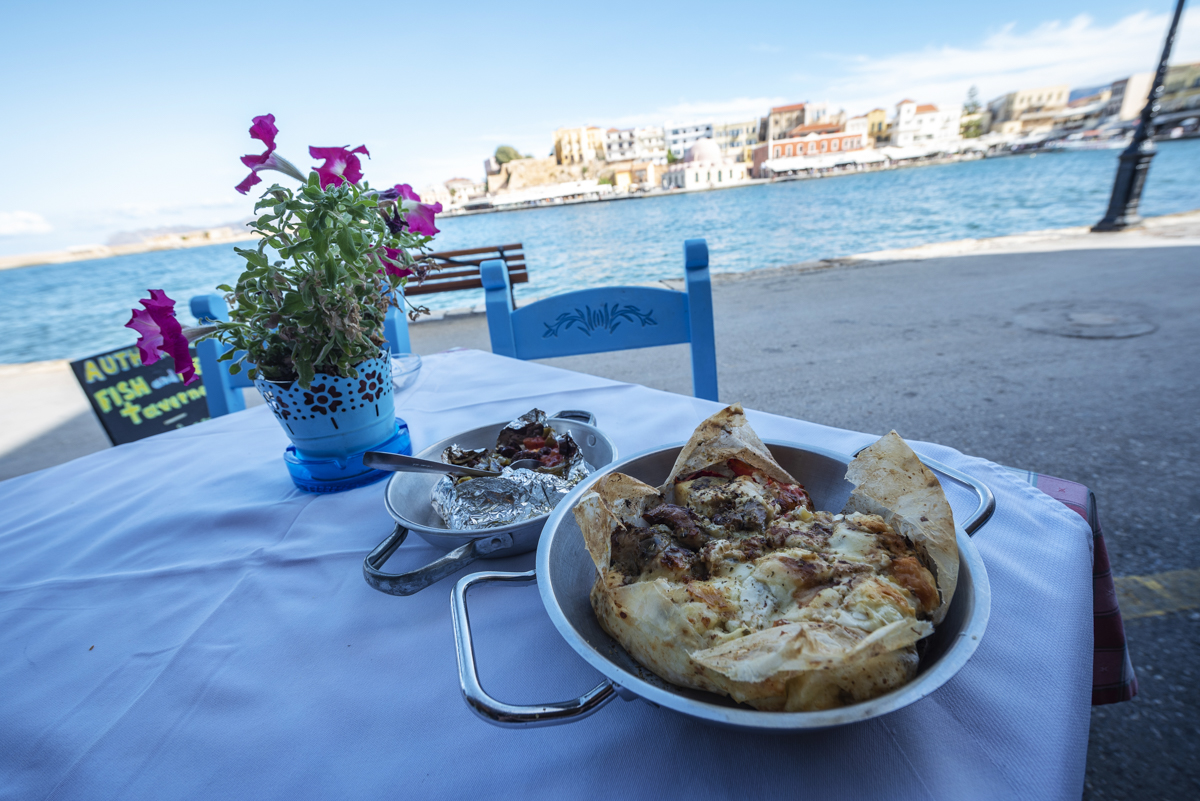
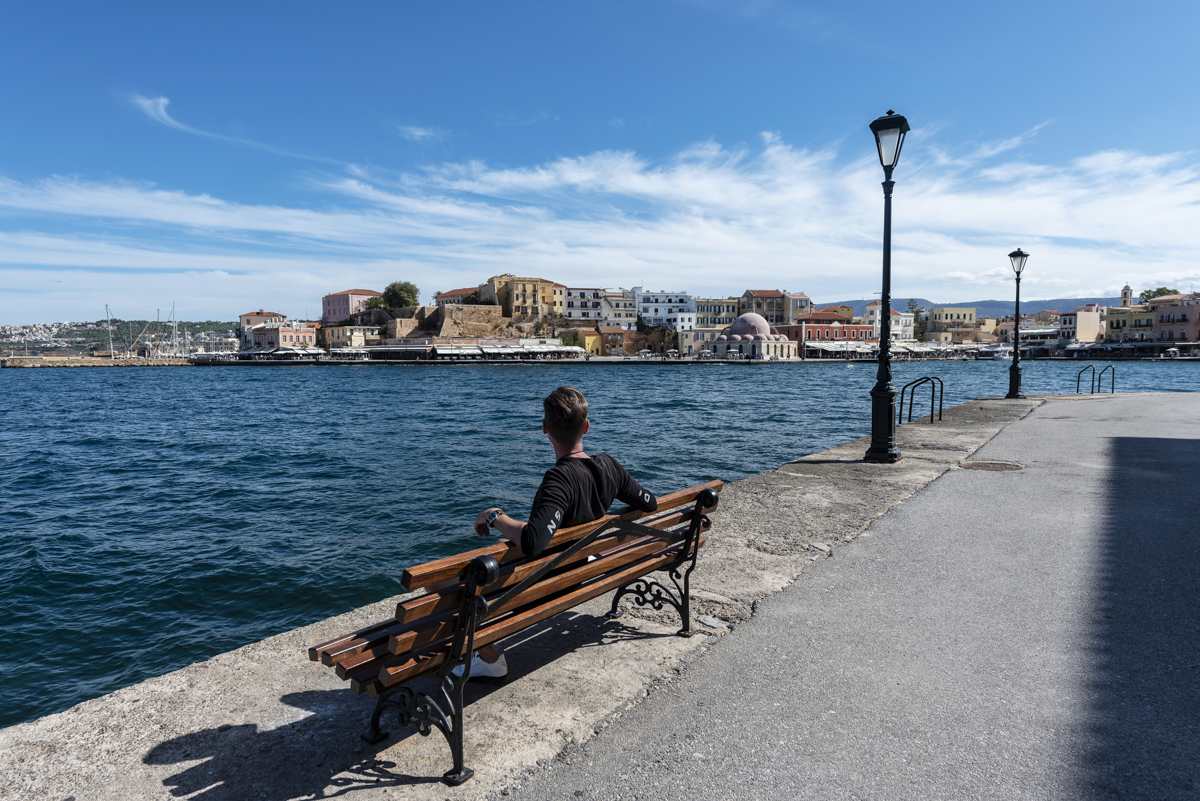
Heraklion may be the largest city on Crete, but Chania is the most beautiful by far. This is what a Mediterranean coastal city should look like in my imagination. A lively Venetian harbour full of pastel-coloured facades in a semicircle along the water, a historic centre full of beautiful churches, a maze of narrow shopping streets to get lost in and an impressive fortress to keep an eye on it all. A city for romantic evenings and candlelit dinners, where after a last glass of wine you’ll stumble back to the hotel with an arm around your significant other. Unfortunately, there was room nor girlfriend for me here, so I had a moussaka and a beer in a small restaurant opposite the harbour instead. You can’t win’em all.
4. Visit ancient Aptera
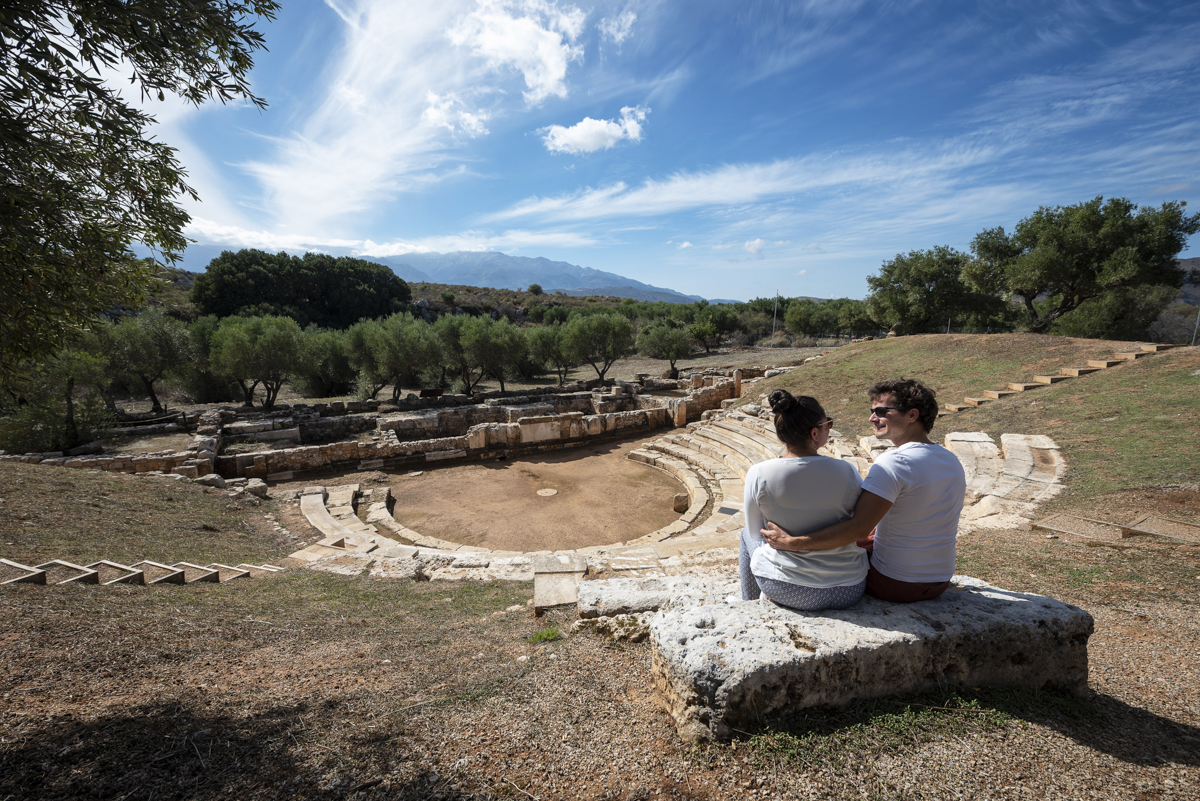
There’s a lot to discover around Chania as well. About ten kilometres outside of the city are the ruins of Aptera. This is a historic site which was almost empty when I was there (in October). Founded in 700 BC, Aptera quickly grew into one of the most important city-states on Crete, until a severe earthquake shook it to its core in the year 365 AD. It took a few hundred years for the Byzantines to settle here before it became somewhat lively again. Because of this strange history, you can now visit both a perfectly preserved antique theatre and a monastery from the 12th century on the same site. In this theatre, concerts and performances are still organised. You too can pop out your best classic monologue if you feel like it. There are barely any people around to laugh at you for it anyway.
5. Hike through Samaria Gorge or one of its many alternatives
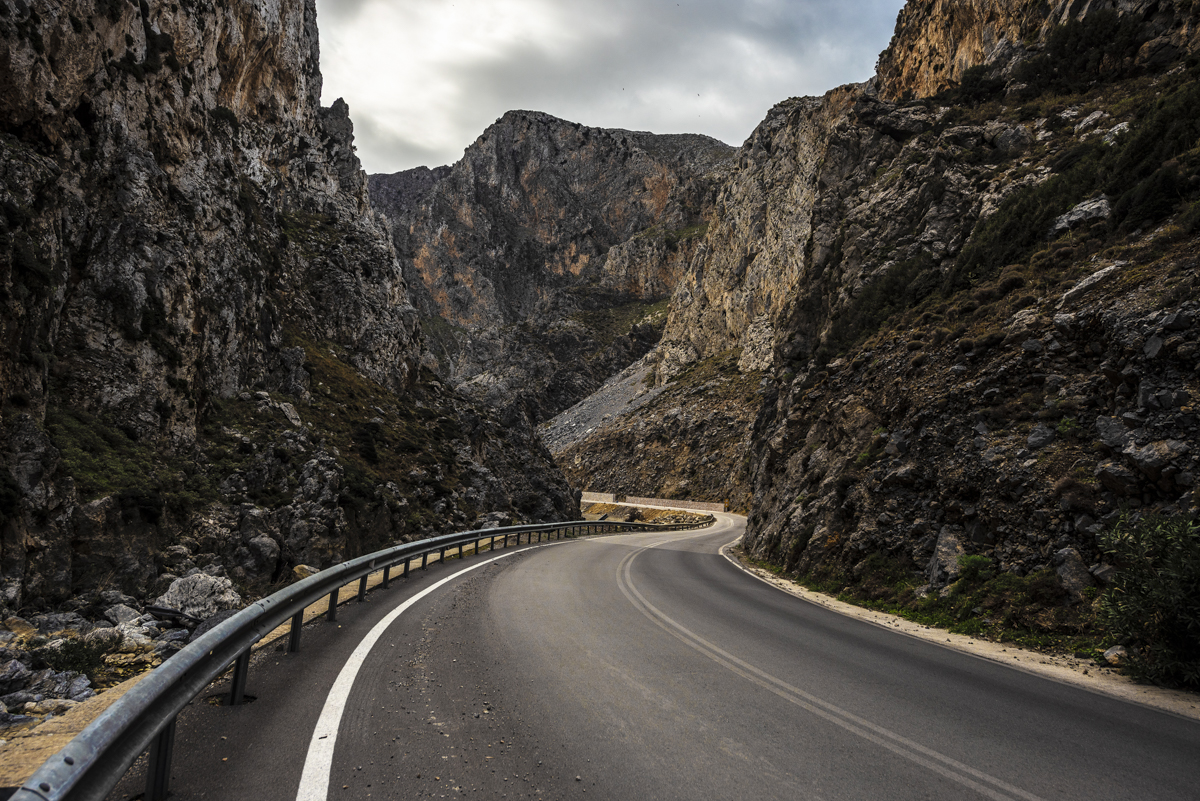
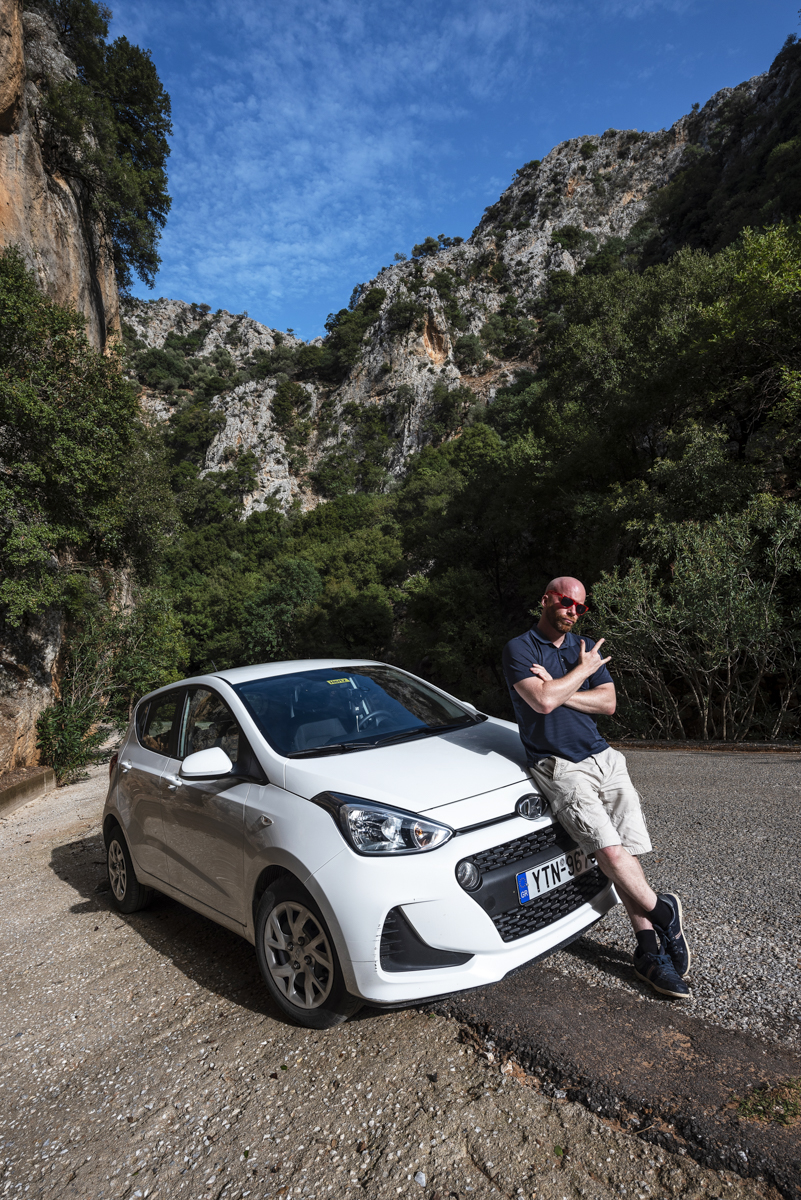
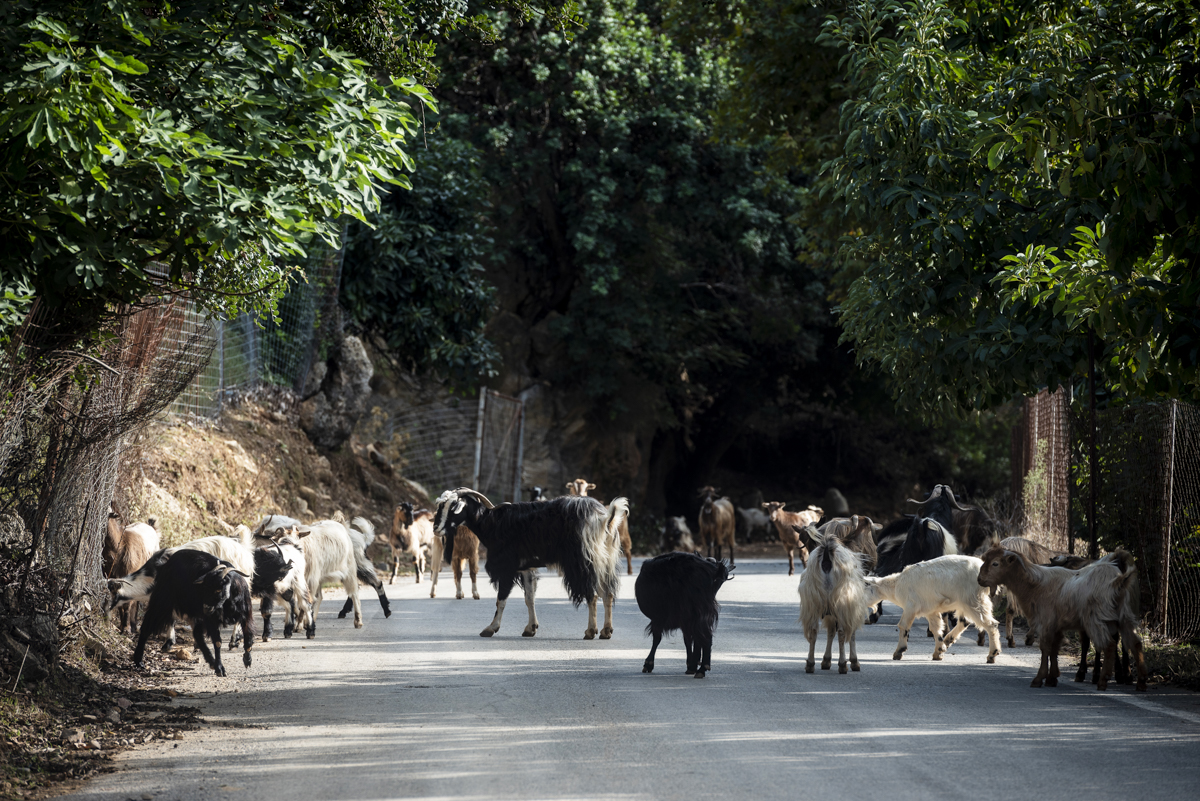
If you want to stretch your legs for a minute – in this case a minute means the whole damn day – you could hike through the largest ravine on the island. The Samaria Gorge lies south of Chania and attracts thousands of hikers a day in the high season. The route is 16km long and runs between steep 300m cliffs that in some places stand only a few meters apart. Since I came by car and would have had to hike al the way back afterwards, I wisely decided to take another option. The smaller but also impressive Therisso Gorge can be traversed by car, and the only thing you have to watch out for are mountain goats crossing the road. These have colonized the entire island, and can be spotted everywhere lazily ruminating on the most ridiculously unsafe cliffsides.
6. Beach holidays on Crete: sunbathing on Europe’s most beautiful beaches
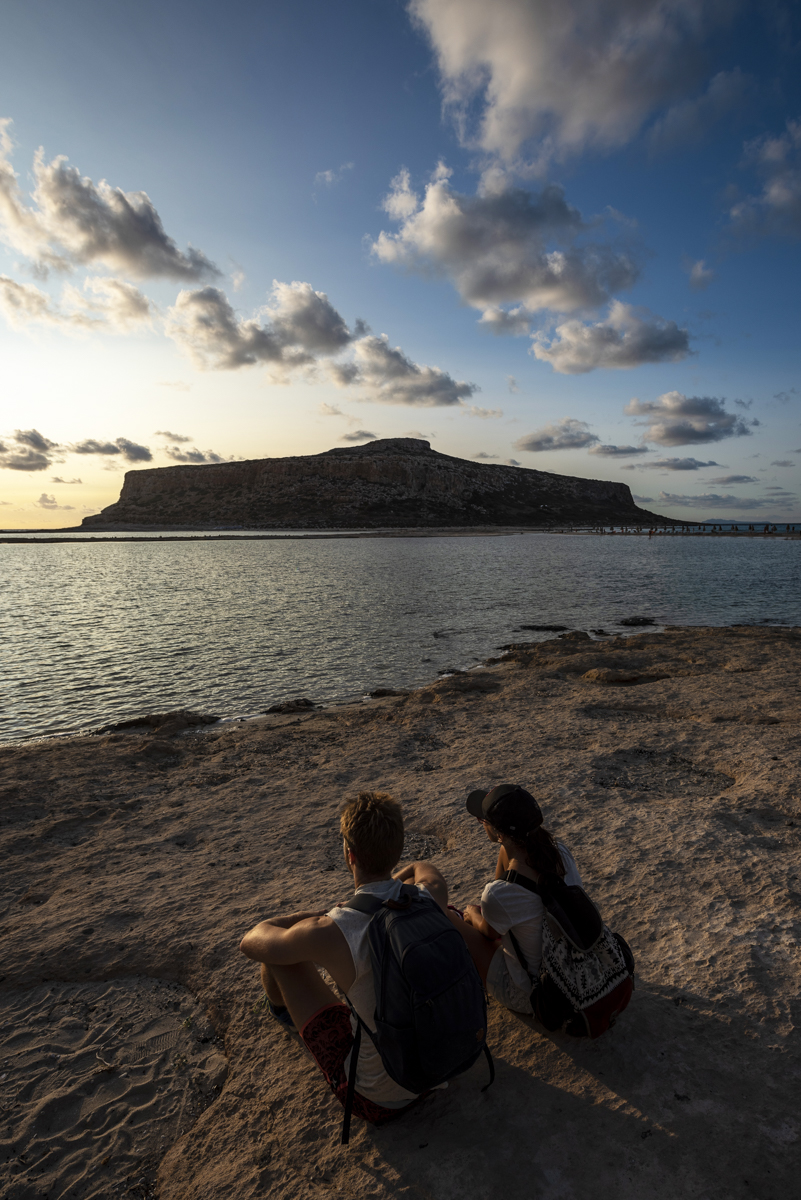
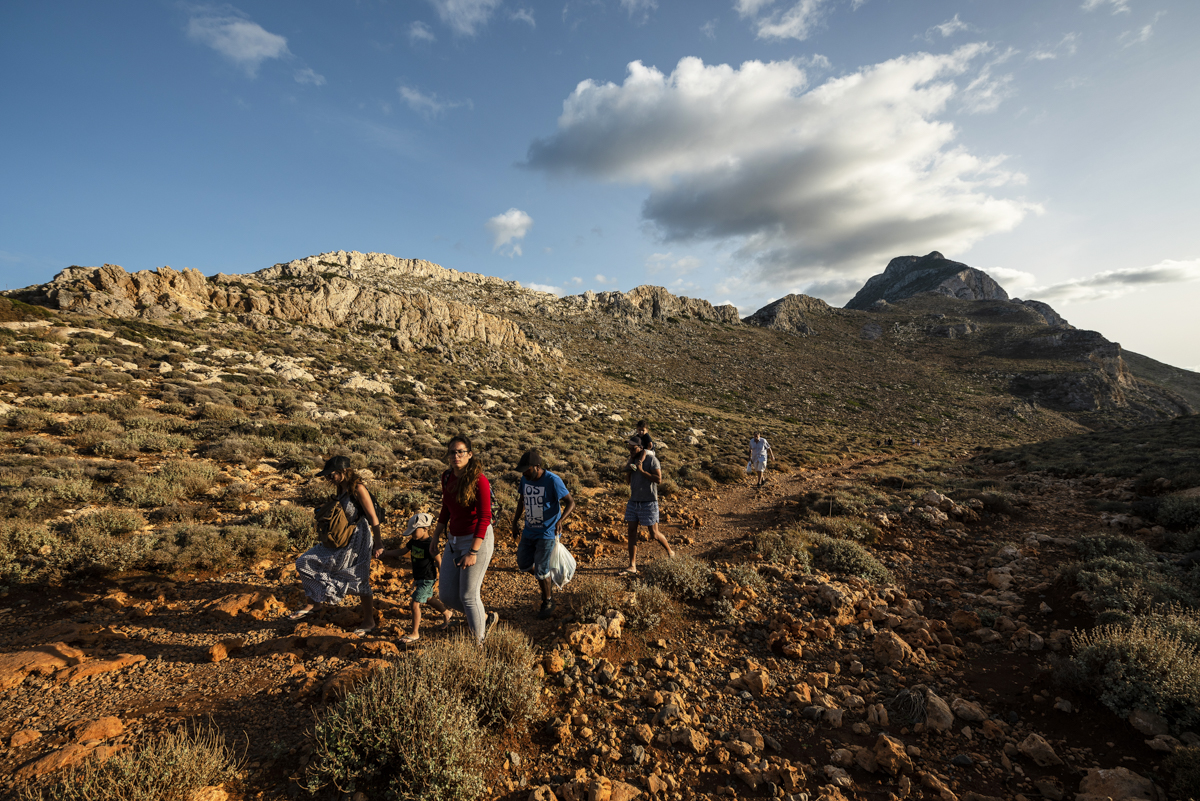
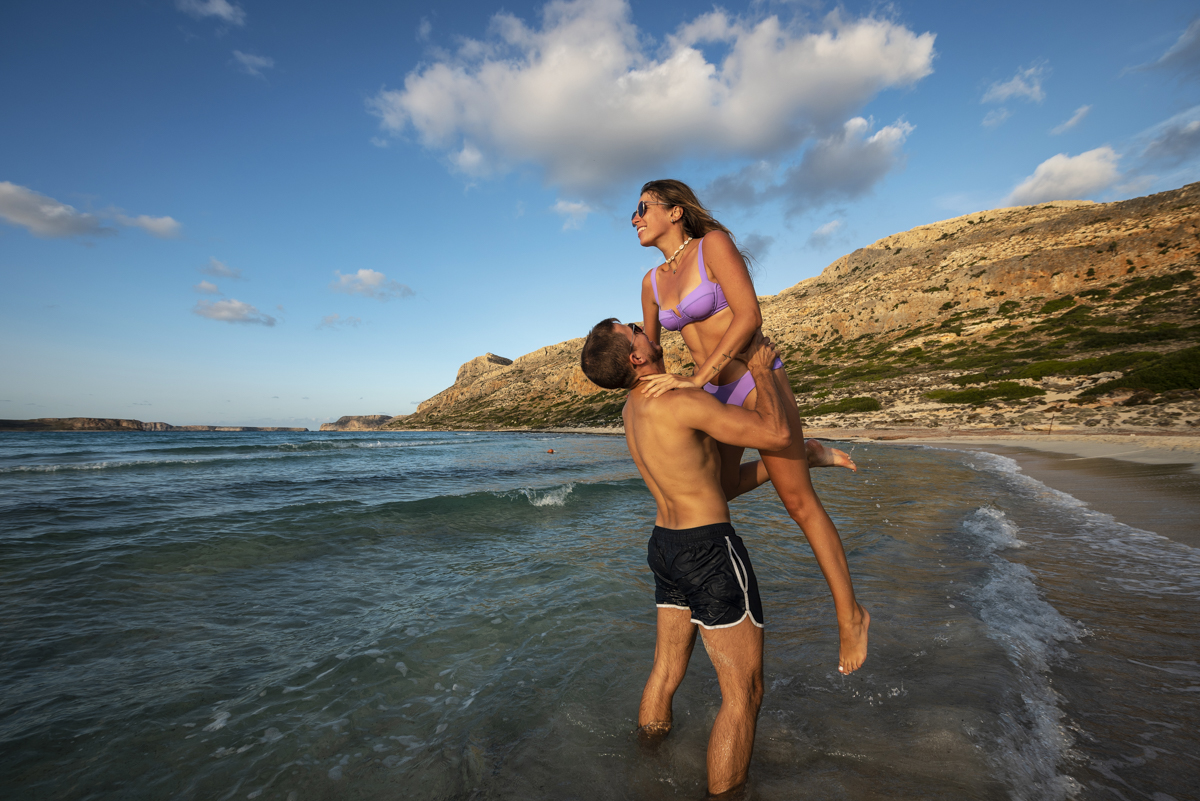
Crete not only has a lot of history on offer, it also comes with a number of exquisite beaches. Vai Beach for example, where you can sip your cocktail in the shade of the largest natural palm grove in Europe. Or Elafonisi, where the beach is pink and the water crystal clear. Preveli Beach is an option as well: here you can sunbathe at the foot of an old monastery and a cliffside, from which a little stream runs down towards the sea. These are three very popular locations, but in many other places you’ll sometimes have the whole beach to yourself. I decided to visit Balos Beach, in the remote northwest of the island. You can go there by boat, but real adventurers take the drive. You’ll first climb a winding gravel path next to a gaping abyss for fifteen rough kilometres, your underwear clenched so tightly into your buttocks you can just about taste it. Once parked, you’ll walk through a phenomenal lunar landscape of rocks and bushes for half an hour, just to finally descend the cliffs on a staircase carved out of the rocks. The beach is draped around a shallow lagoon and is sheltered by a number of rocky islands. This allows you to walk through the water like Moses over one dry strip of sand. The hike down takes you right back to ancient Crete, maybe even more so than a visit to Knossos. Climbing back uphill to the parking lot later is slightly less pleasant, but you’ll have to take that in stride.
7. Venture into the mountains and discover Crete’s unique village culture
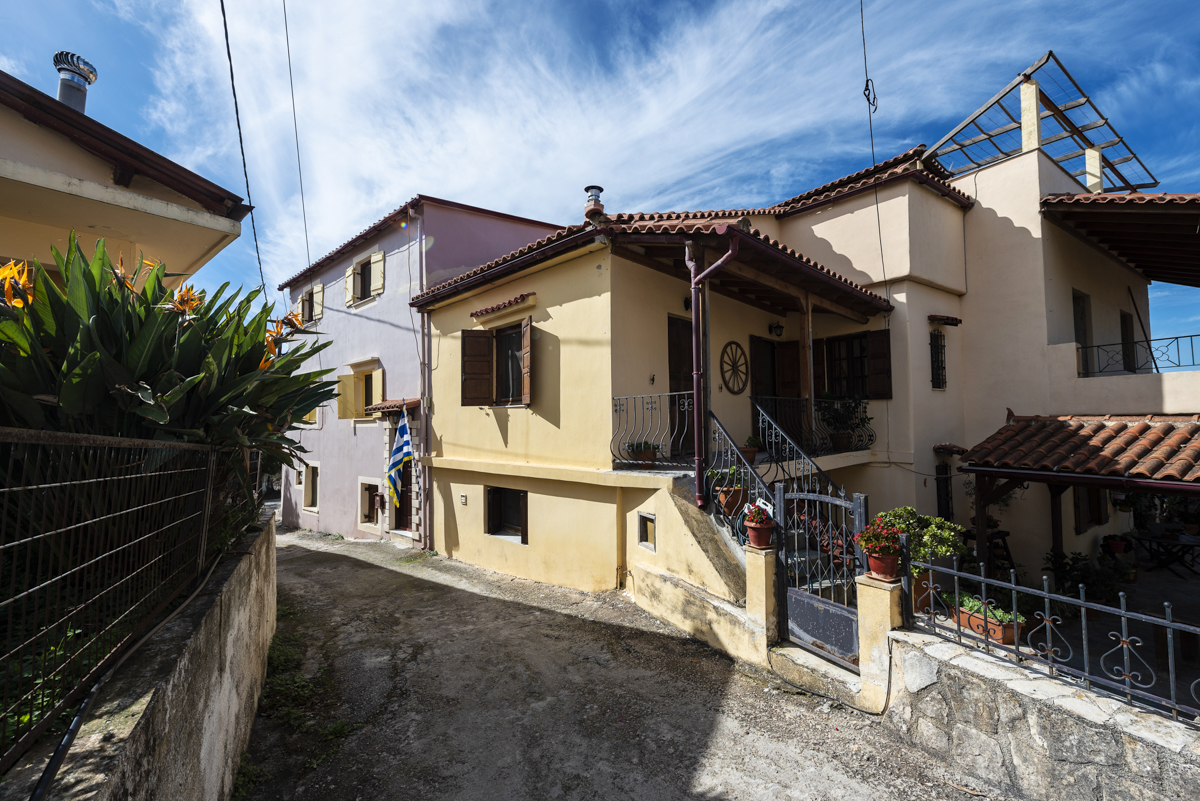
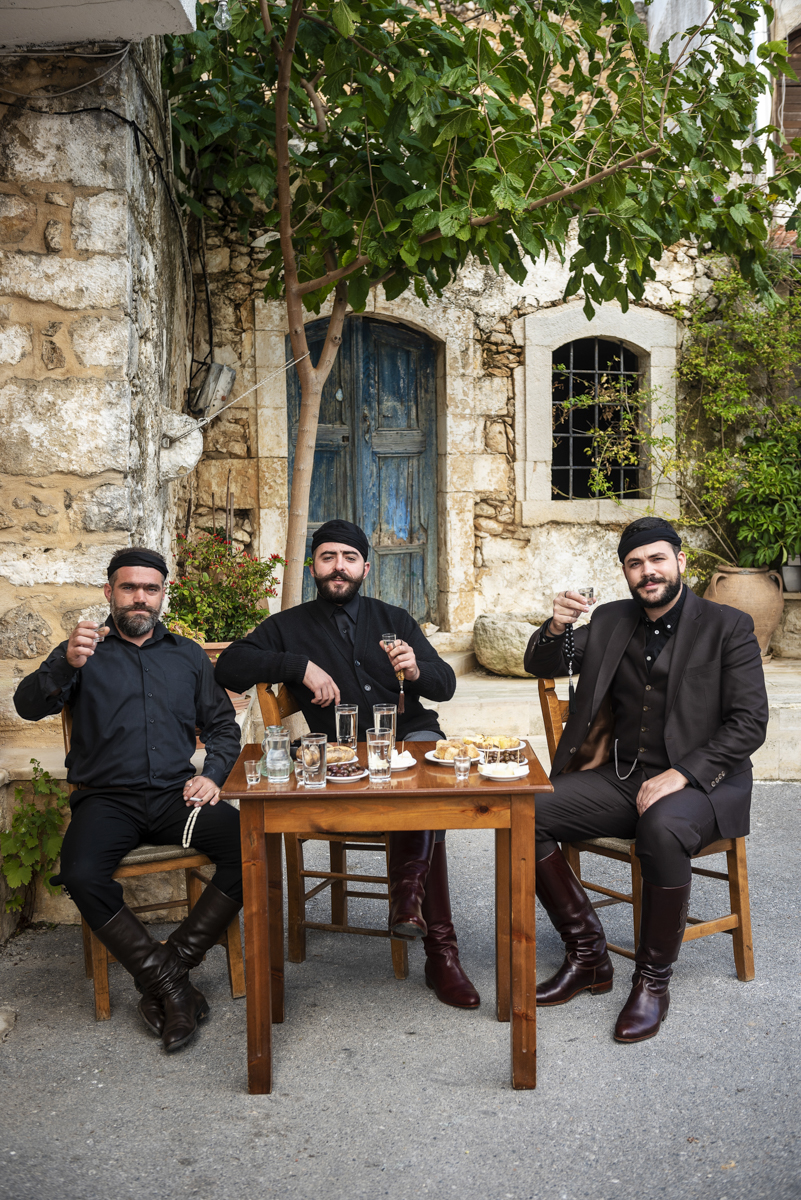
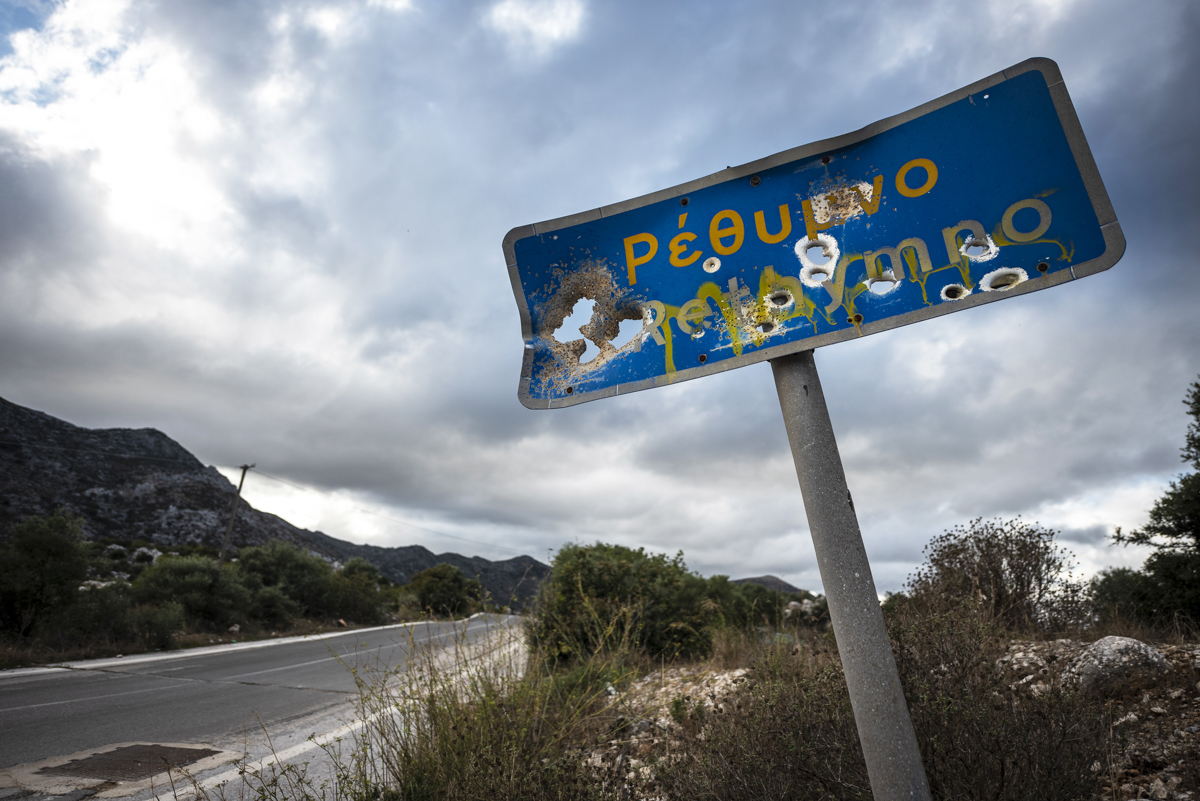
A beach holiday on Crete is never a bad idea, but the best discoveries are made in the mountains. Not only are these a lot of fun to drive through, with their countless views and wild hairpin turns, you’ll also end up in a completely different world, miles away from the more cosmopolitan coastal cities. Time seems to have stood still here for decades. Most villages are spread out around one bakery or a few bars, where rough looking moustachioed men in traditional black suits and with their pants tucked into their boots are sipping coffees. Here and there you’ll see road signs riddled with bullet holes. This is not because it’s dangerous here – most people are incredibly friendly – but because inland Crete developed the most widespread gun culture in Europe. On my first evening in the mountains a wedding was held in the village. Half of the attendees were enthusiastically shooting bullets at the night sky. Don’t be bothered by this. Find yourself a table in some local mountain tavern and you’ll get to enjoy a homely feast without equal, at very democratic rates and usually with a free shot of raki to top it off.
8. Buy original ceramics in Margarites
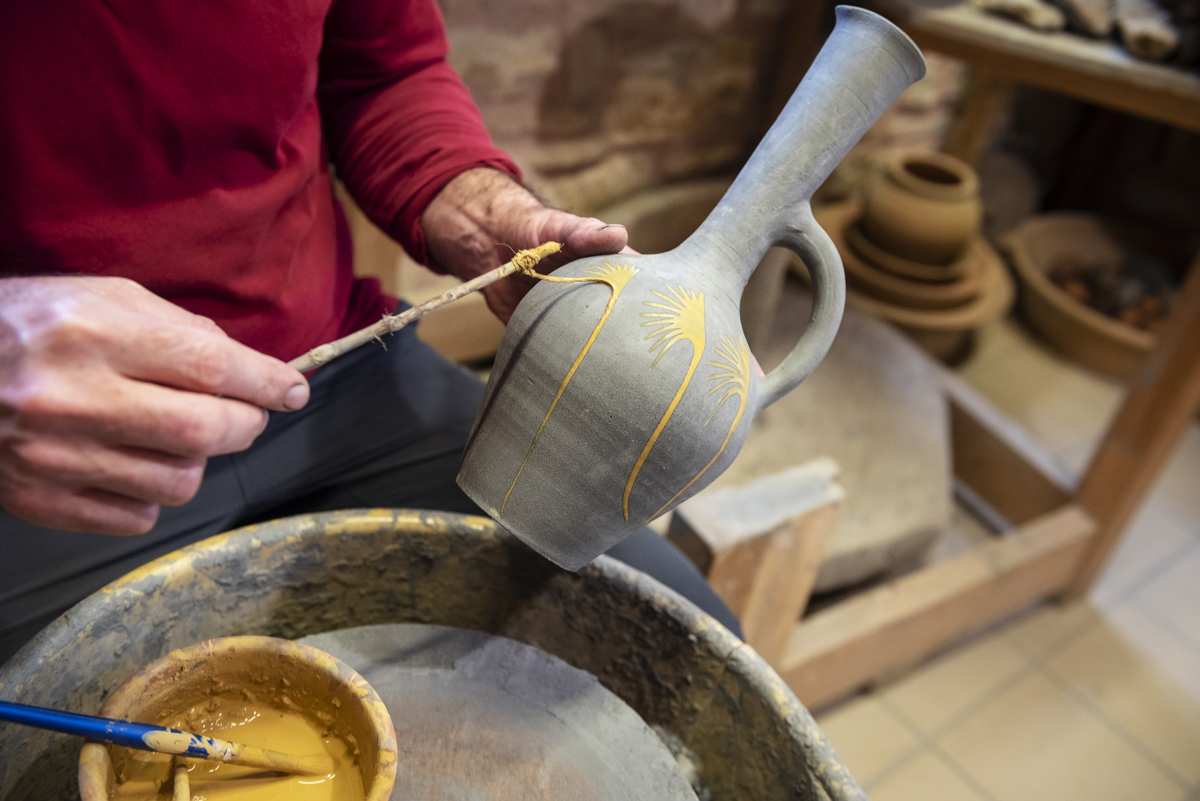
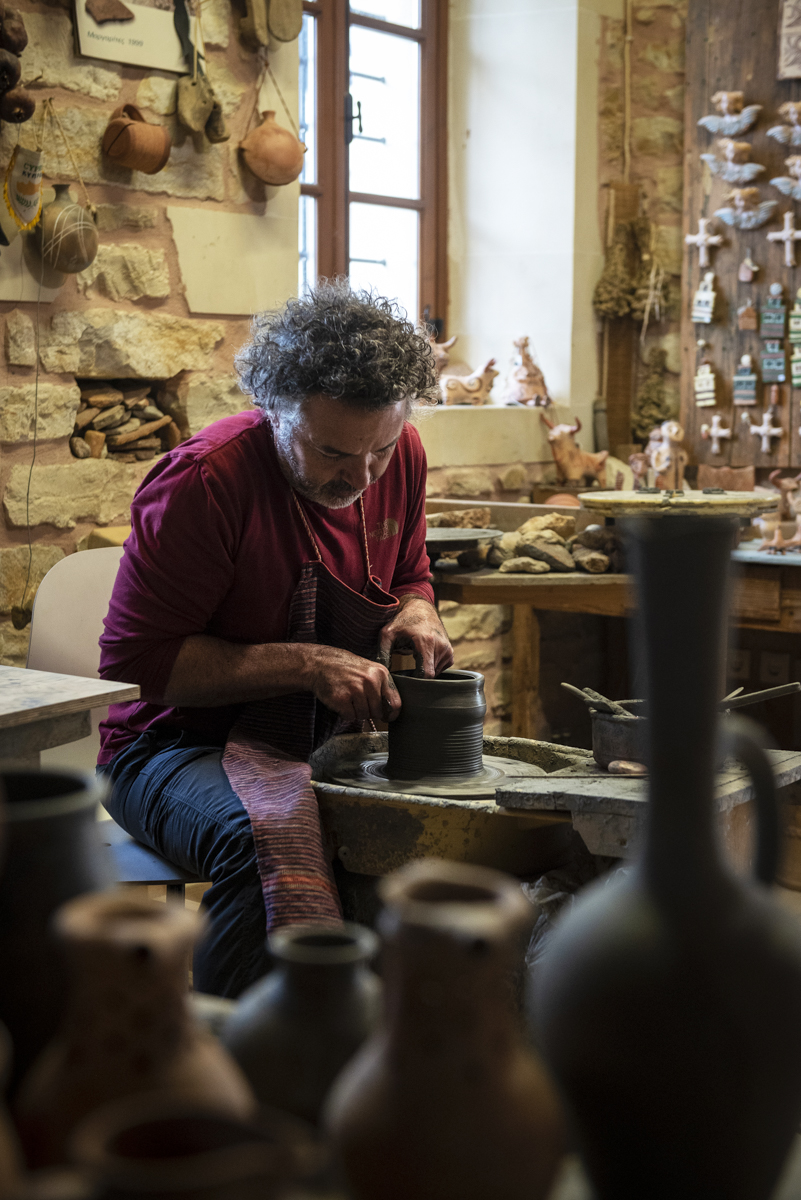
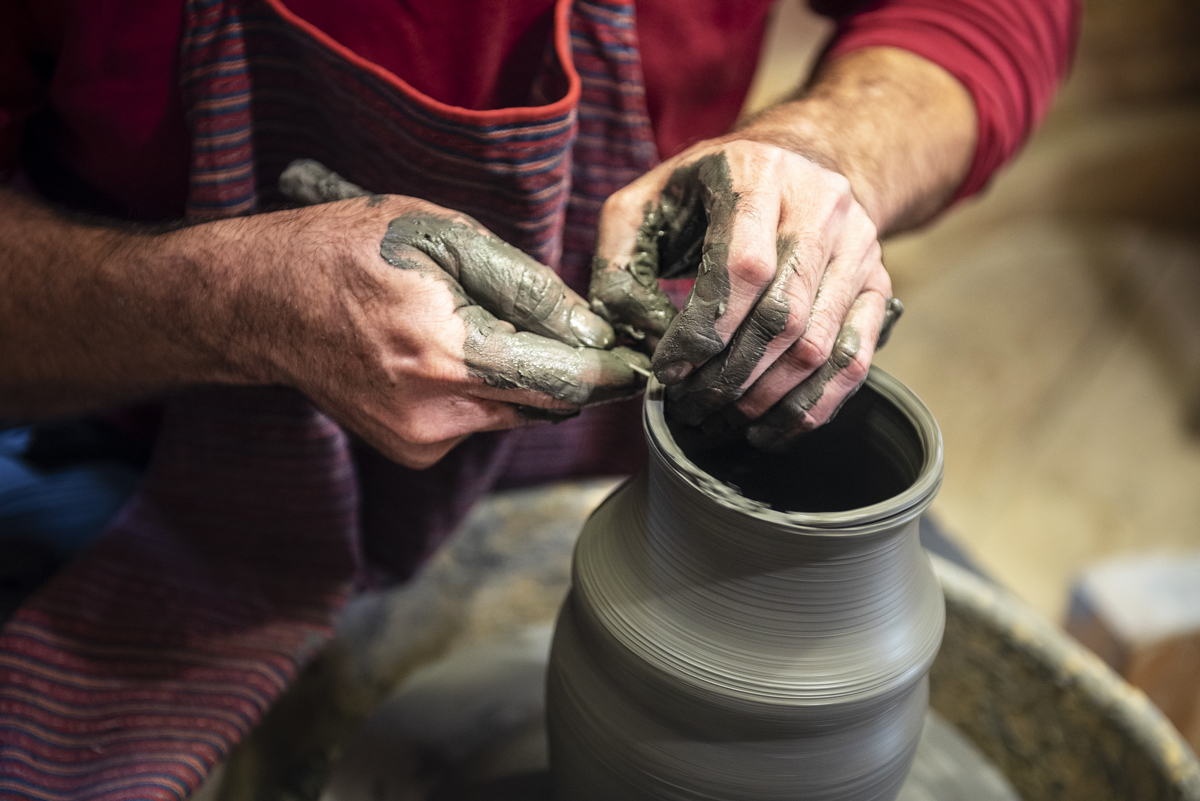
One of the nicest villages to take a break in is Margarites, which lies close to the ruins of ancient Eleftherna – another important historic site still being excavated. This photogenic hamlet is known for its pottery. The whole village is basically one street with twenty active potteries waiting for your business. The most unique one of these is Keramion, where everything is produced according to the original Minoan techniques. The pottery here is baked with wood, which creates an unusual brown finish. Owners George and Marinki are often at work in the store, and they’ll enthusiastically tell you how all of their trinkets are made. Very pleasant people. www.keramion.gr
9. Visit the Lasithi Plateau and Dikteon’s Cave
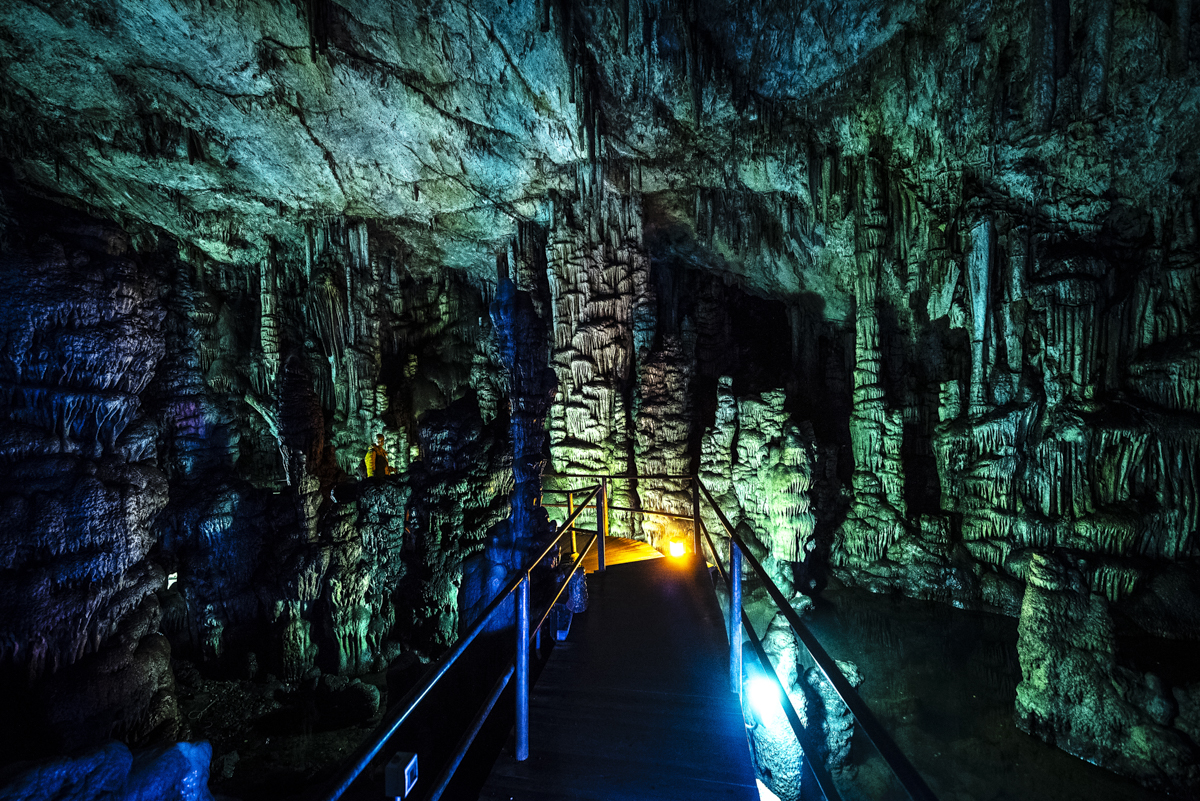
One of the most beautiful and adventurous rides you can go for on Crete is the one to the Lasithi Plateau. This is a long way from Heraklion, and the road to it climbs up relentlessly all the way from the seaside to the eventual top, along countless hairpin turns and phenomenal panoramas. The plateau itself is a vast green plain at nine hundred meters above sea level, completely surrounded by jagged mountain ridges. Here you can see rural Crete at its best, and it used to look even better because back in the day there were about 20,000 traditional windmills sprinkled all over the place. Once you’ve reached the plateau, you can visit Dikteon’s Cave via a short but challenging hike. The cave looks like an underground cathedral full of impressive stalactite formations. According to legend, this is also the place where Zeus was born and later hidden by his mother so that his father Kronos would not eat him. The Greek Pantheon could have made any decent family therapist a millionaire.
10. Contemplate the Moni Arkadiou Monastery tragedy
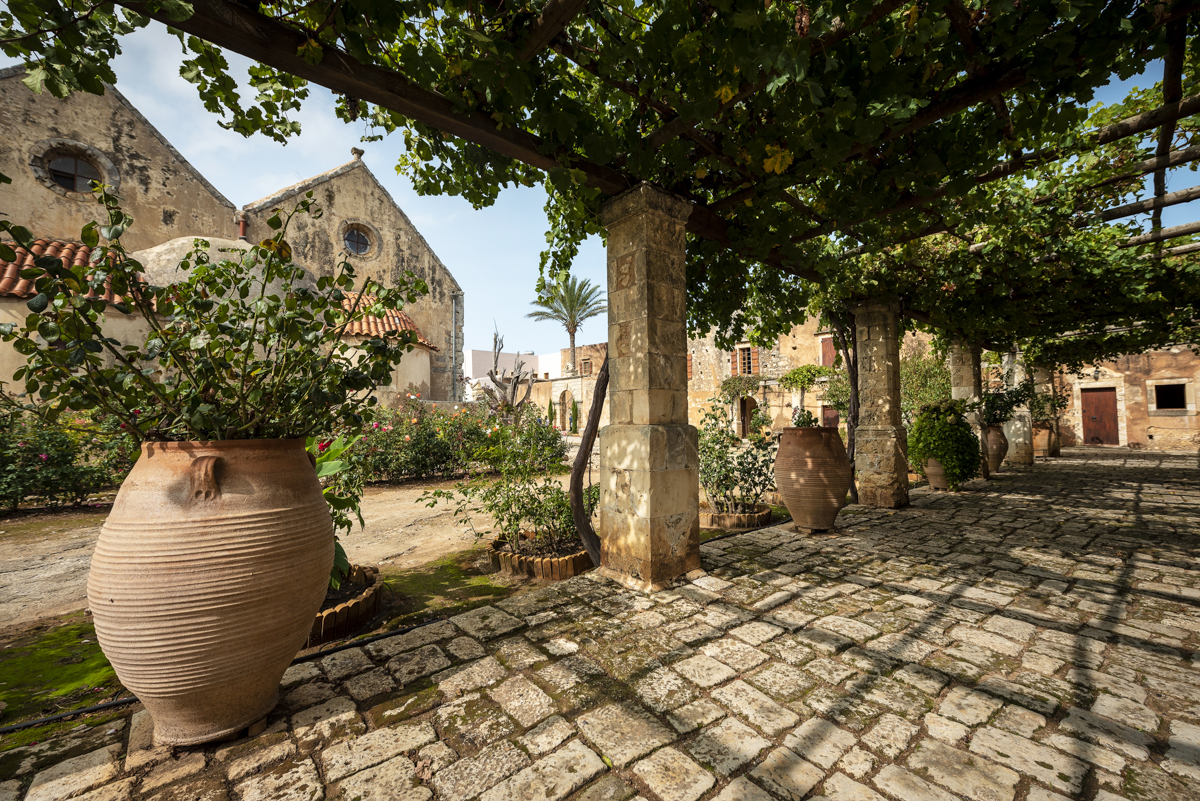
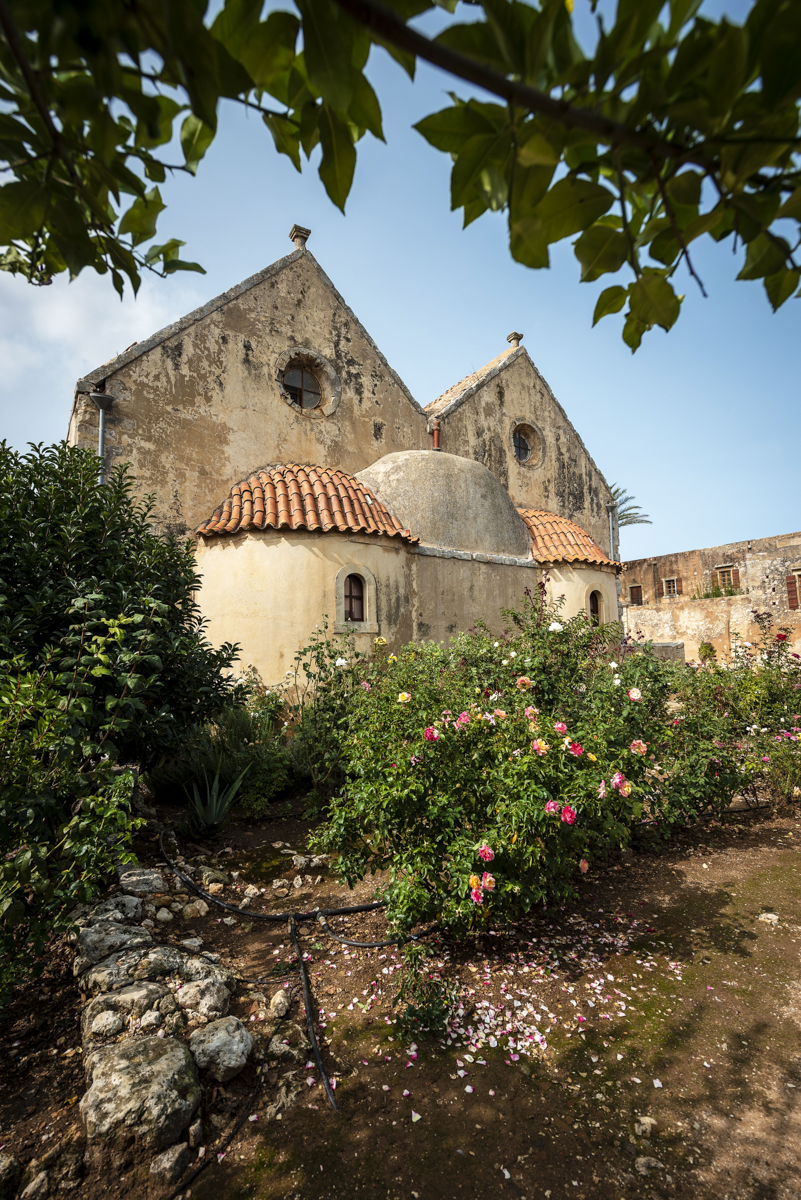
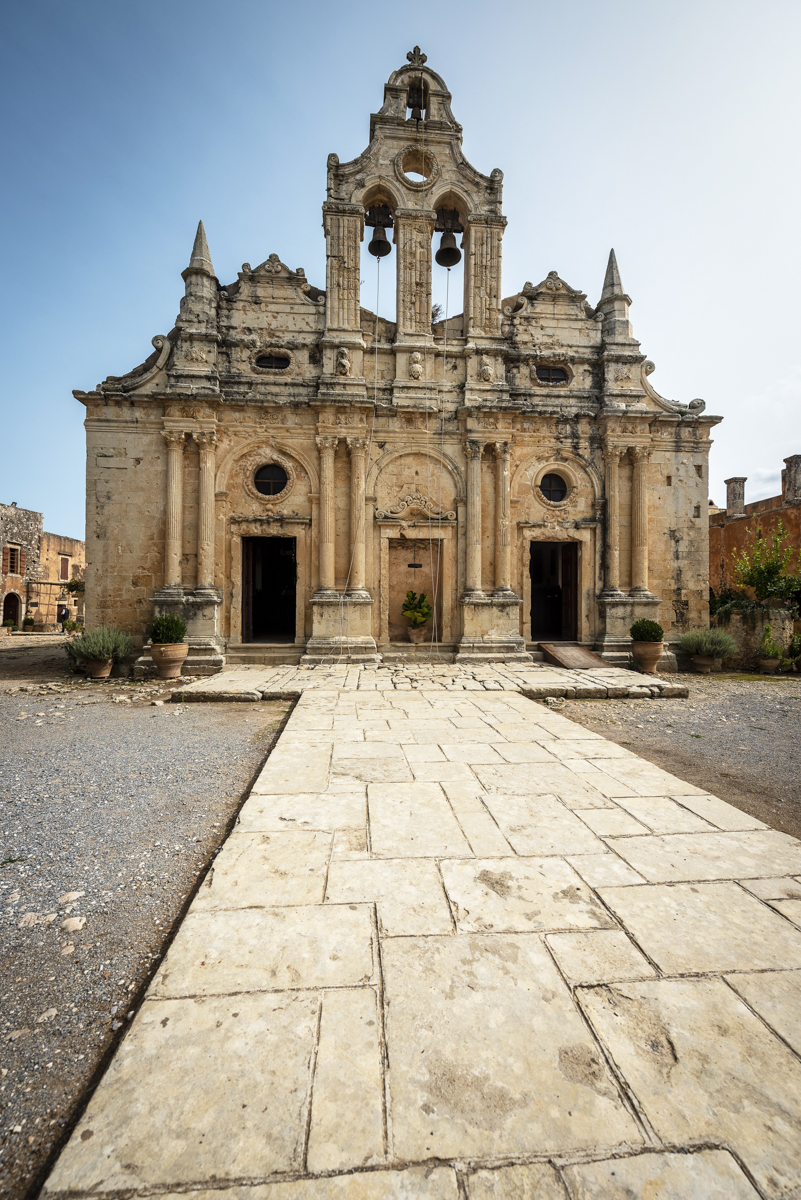
What the Cretan mountains also have in abundance, are old monasteries. Moni Arkadiou is the best known of these. This is a beautiful and atmospheric complex hiding a historic tragedy. In 1866, after the Turkish invasion of Crete, a few hundred Greek men, women and children had taken refuge in the monastery, where they got surrounded by two thousand Turkish soldiers. Instead of surrendering, they decided to blow up the powder magazine, and by extension themselves as well as the Turks. A single little girl survived the explosion. Partly because of this drama, the monastery remains a place for quiet contemplation. The busts of the girl and the priest who lit the powder kegs are still outside the premises. In an ossuary in front of the entrance, the bones of some of the victims are kept on display. Don’t ask me why.
11. Drink a whole bunch of wine at the Silva Winery
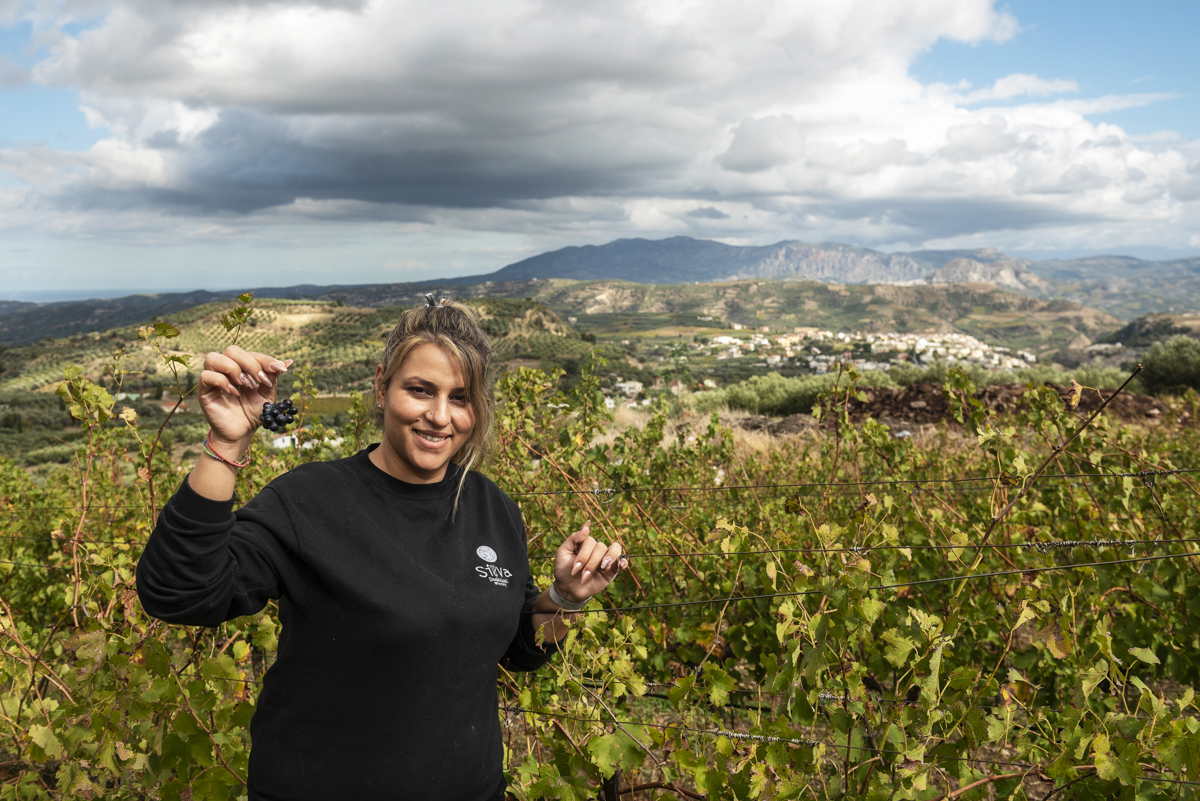
Crete is known for its fantastic wines, and the largest wine region can be found just below Heraklion. I visited the Silva Daskalaki Winery: a family winery with a wide range of different bottles. The company is run by a mother and her daughter, who offer food pairings with traditional Cretan dishes as well. Some of their wines are still produced and kept according to the old methods and are stored in real clay amphorae, which are sealed with beeswax. If you ever wanted to organize a traditional bacchanal with ancient Greek wines, you’ll probably come closest to it here. www.silvawines.gr
What to do on Crete: hotels and rental cars
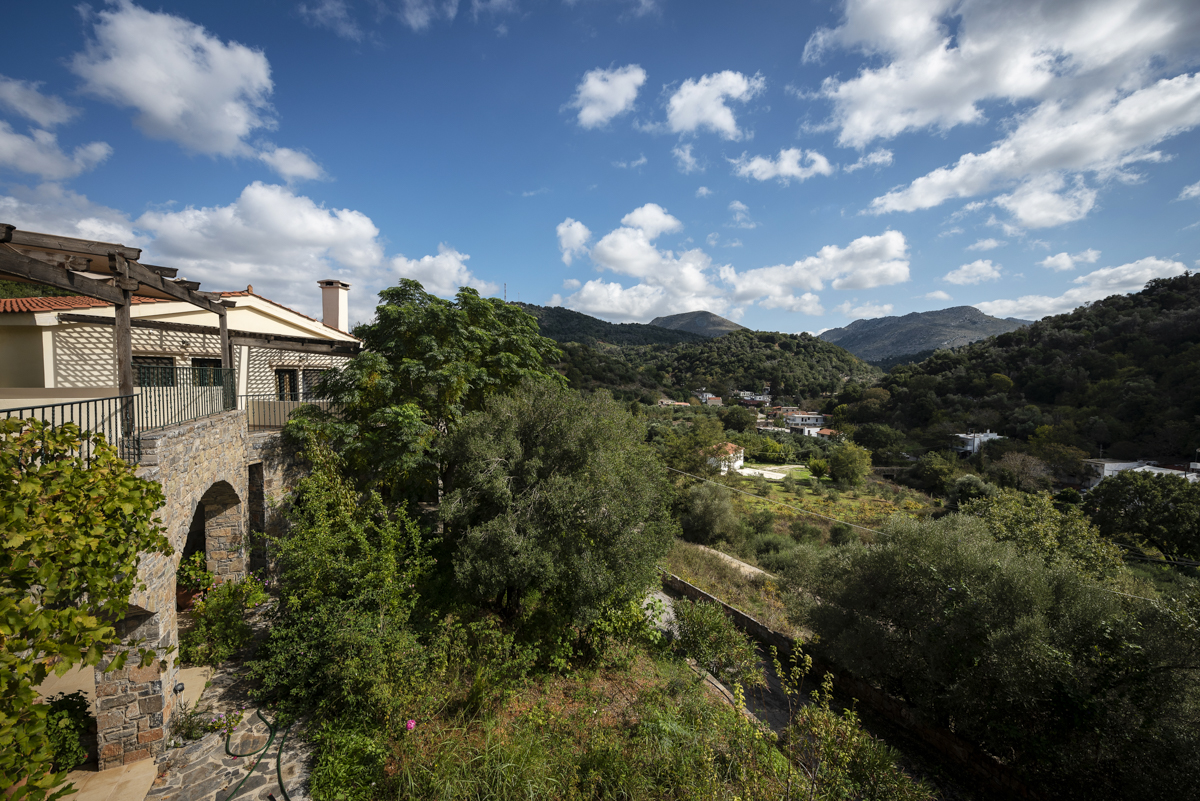
My hotel in Crete was actually a fully equipped apartment in Aposperitis Villas, just outside the mountain village of Drosia. Here, several cosy apartments about three quarters of an hour’s drive from Heraklion are waiting for you. The apartments are owned by a friendly older couple who drive up from the capital almost every day to keep everything clean. When I left I got a bottle of homemade raki and a whole box of pastries to go. That’ll make you feel welcome. More information about Aposperitis Villas and many other rental locations on Crete can be found on www.elizawashere.be (book via this link and I’ll get a little something something).
This report first appeared in a different form in VAB Magazine. You can read the online version of it here.
I flew directly from Zaventem to Heraklion with Brussels Airlines in just over three hours. www.brusselsairlines.com
I got my rental car from Hertz, and was able to pick it up at the airport. Since driving in Crete often involves steep mountain roads and scary turns, some confidence behind the wheel is advisable. The main road connecting the major coastal cities is full of speed traps, which are usually set up in places where the speed limit goes from 90 to 60 km/h. Don’t tell me you weren’t warned. www.hertz.com
For more information about Greece and Crete, visit www.incrediblecrete.gr and www.ilovegriekenland.nl.
Fancy a number of other foreign destinations? Then read my pieces about Amsterdam, Swaziland, Porto or Lodz.
Want to explore a few Belgian cities? Read all about Hasselt, Genk, Kortrijk, Roeselare, Deinze or Diest.










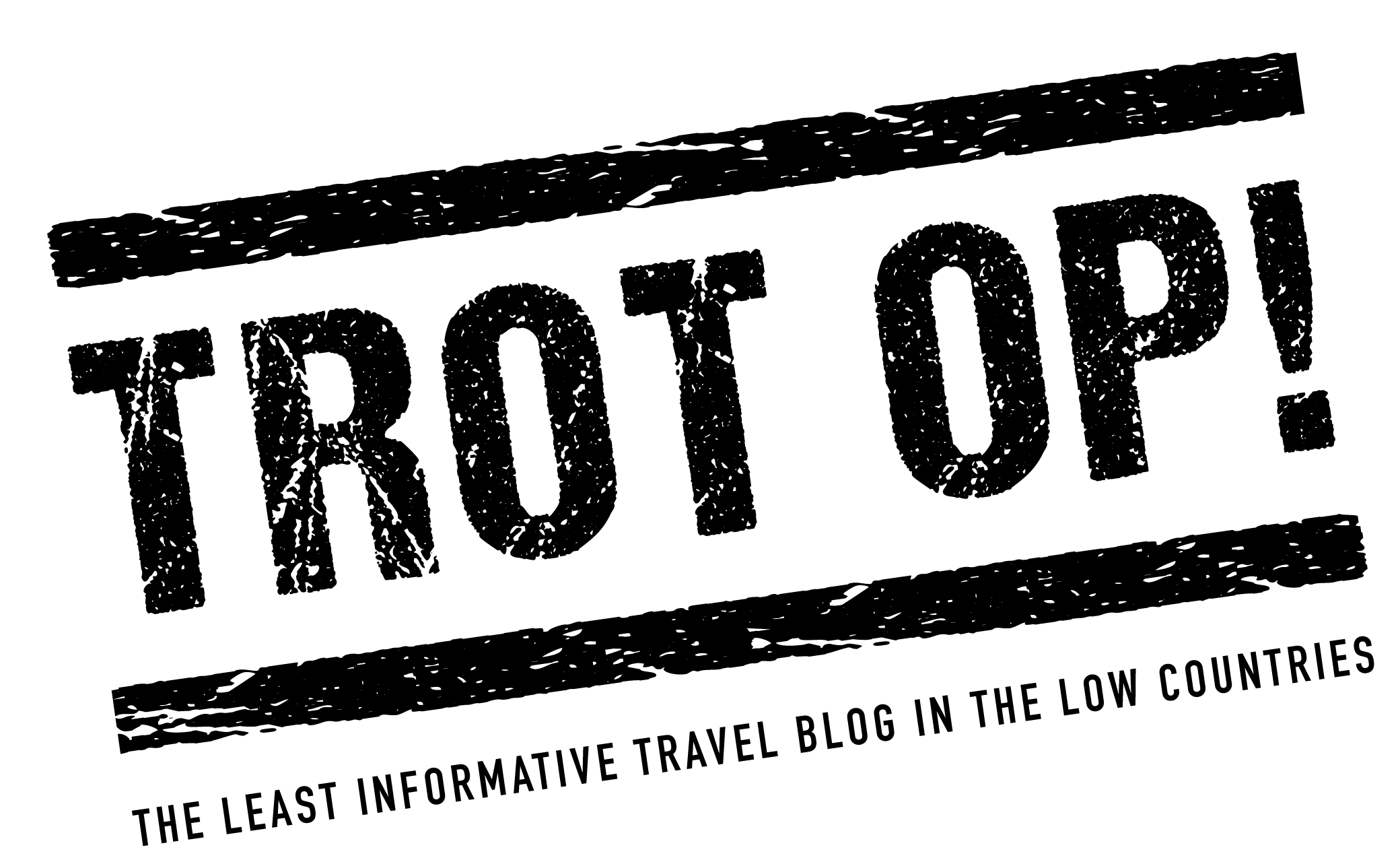
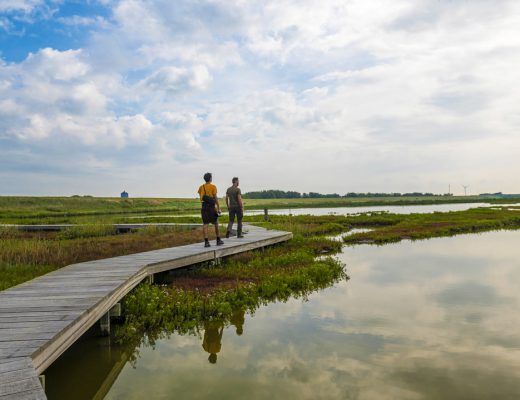
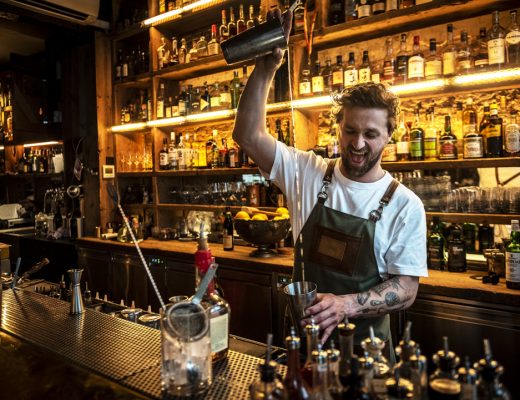
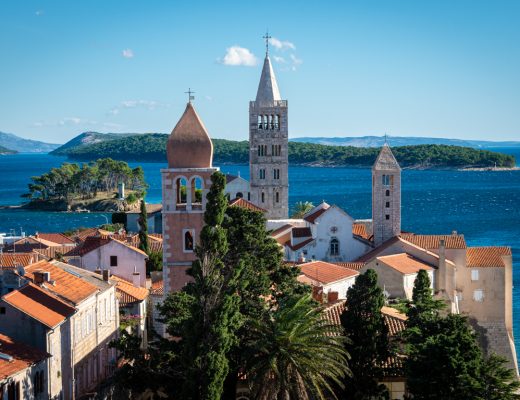

No Comments